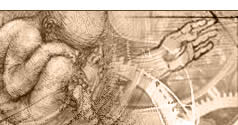 |
 |
 |
 |
 |
 |
 |
 |
|
 |
 |
 |
56 Surfaces of planets and moons
|
| Menu | back |
If the planets and moons in our solar system have developed from a more or less homogeneous gas or dust disc, the following question comes up: Why are their surfaces composed of radical different materials? Why are there no identical planets or moons? This questions the current theory of the development of planets and moons.
The enormous variety of surfaces of planets and moons in our solar system shows impressively that the scenario according to which these heavenly bodies purportedly originated from a homogenous gas or dust cloud is not realistic (1). The better the data become, the clearer the differences appear (2).
A few examples:
The surfaces of Jupiter and Saturn consist primarily of liquid hydrogen and helium; however, each has a different composition. The surface of Venus is covered by a dense atmosphere of carbon dioxide and sulfuric acid. The surface of Mars is similar to a dry rocky dessert on the Earth.
The surface of the moon Europa is remarkably uniform and shows hardly any meteorite craters at all. New data indicates that this moon has a surface which is full of aggressive, corrosive substances. The surface of the Earths moon is a dust dessert. The Jupiter moon Io has a surface consisting of sulfur and sulfur hydroxide. The Saturn moons Enceladus and Tethys are covered with aqueous ice. Saturns moon Titan is covered with liquid ethane and methane.
Conclusion:
The celestial bodies in our solar system appear to be well formed and are individually distinguished. The question of whether they could have formed from a homogeneous cloud of gas or dust cannot be answered.
It is possible that the planets and moons to be researched during the coming decades will emphasise the impressive differences of the celestial bodies. Our solar system, the Milky Way and the rest of the universe are possibly composed as functionally as, for example, the human body. Could it be that each one of the heavenly bodies fulfils a specific purpose?
These 57 | Menu |
back
|
References:
|
| (1) |
Kendrick Frazier, Das Sonnensystem, Time-Life Books, 1985, pages 128145. |
| (2) |
Norbert Pailer und Alfred Krabbe, Der vermessene Kosmos, Hänssler, 2006, pages 99116. | |
| |
Comment this Site!
|
 |
 |
 |
 |
|

